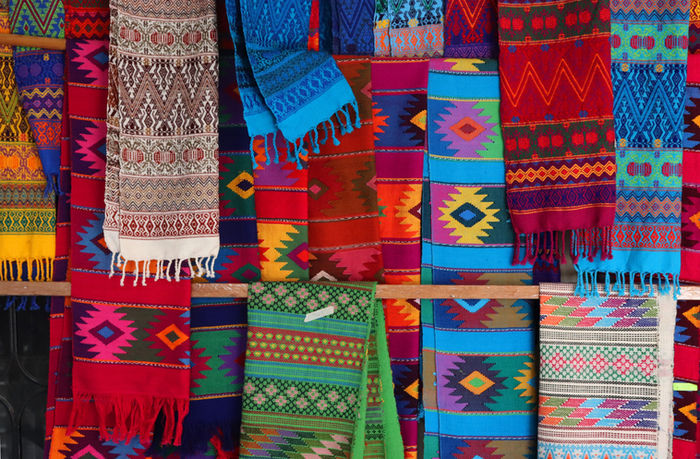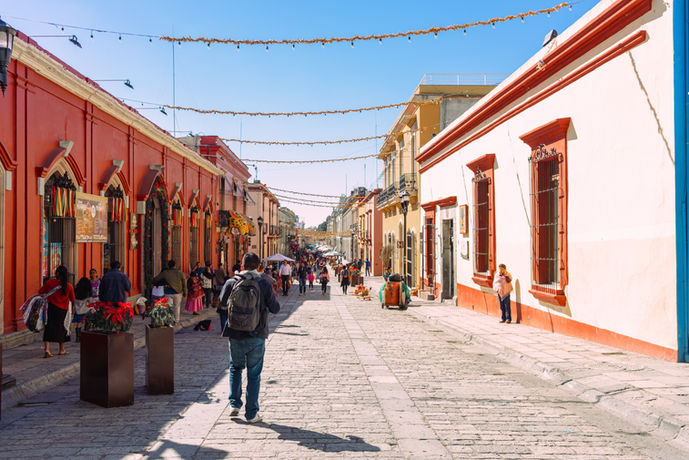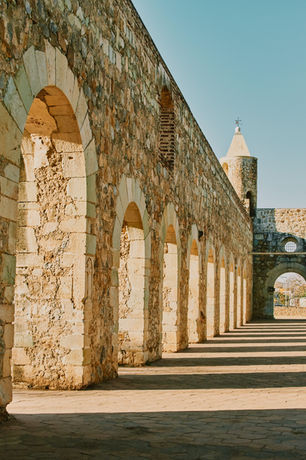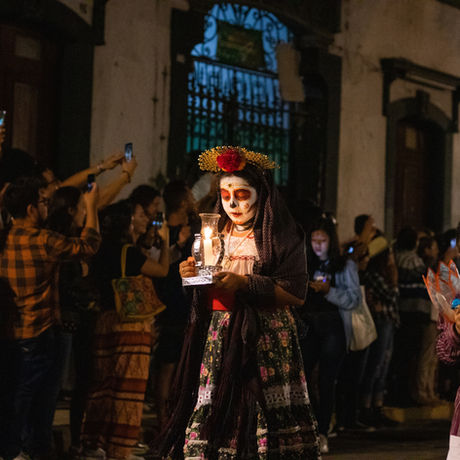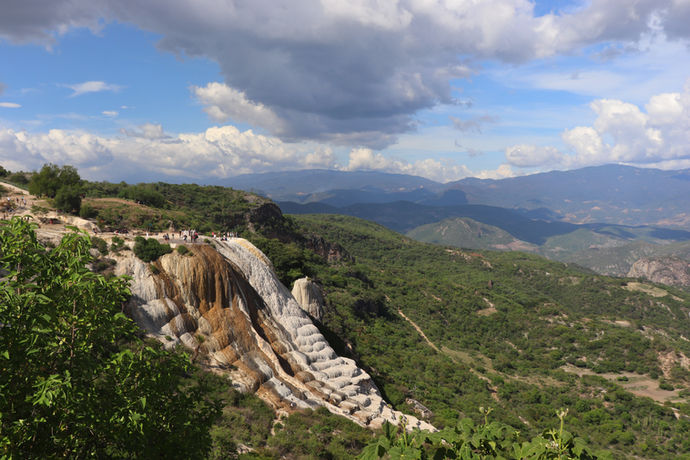
Salt Water Farm Showcasing The Best of Oaxaca [waiting list only]
... at a glance
Group Size
16
Duration
5 nights/ 6 days
Departure Date
February 8-13, 2026
A Message From Salt Water Farm...
In early February, a blue jays nibble seeds from the bird feeder outside of the kitchen window. Their bright blue feathers are reminiscent of the shade of blue paint used to color the facades of the buildings in Oaxaca, Mexico, our home away from homes. Each winter, I head South with my family to Mexico, a country that has held a special place in my heart since I was a child. My parents lived in Mexico City just before I was born and their tales of dinner parties that lasted well past midnight and demonstrations in the streets suggested a vitality that was lacking in our Midwestern suburb. Once a year, my family would travel to Mexico, usually to the Pacific coast, where my sister and I would do cartwheels in the break of the ocean waves, our skin more than kissed by the sun. As we passed through the markets, women in layered skirts, their hair braided down their backs sold woven rugs, leather huaraches and cotton dresses in shades of blue, green, red, yellow orange and purple. We sat at plastic tables in the sand eating grilled meat and fish covered in red and green salsas alongside a stack on warm tortillas. As far as I was concerned, there was no need to go to Disney World. Mexico had it all.
Fast forward a few decades, and I find myself continuing with this annual tradition. My husband and I have explored the Yucatan, District Federal, the Western Coast and the Southern region of Chiapas. But the place that has its grip on us is a mountain town called Oaxaca City. I am routinely asked by Americans why I am so fond of a Mexican town that is not on the beach. The answer is simple. Never before have I seen so much of life and culture celebrated publicly in the streets in such magnificent display. It’s hard to pass through the town without sighting a celebration of some kind; a bride and groom emerging from the glorious Santo Domingo Church with a well-dressed wedding party in toe, a culinary festival complete with horns, drums and women in traditional Oaxacan costumes, their skirts twirling in a rainbow of color, adolescents in an organized salsa dance resetting the boom box to start from the top, a familial gang of motorcyclists showing off their steely bikes as if unfurling a plum of peacock feathers or clusters of children roller-skating through the park and licking goats milk caramel flavored ice cream under the palms. It is a sweet respite from the bone chilling winter winds of Maine.
In my carryon are photocopied recipes from Diana Kennedy’s books to use as my guide once we’ve reached our rented apartment or house. I always make sure that there is a well outfitted kitchen before booking. The markets are the place where I feel the most fluent, with a better grasp on words for food than verb conjugations. Before shopping, I’ll sit to enjoy a bubbling breakfast of chilaquiles smothered in salsa or a quesadilla pressed with queso Oaxaca (Oaxacan string cheese) and flora calabasa (squash blossoms) or cuit la coche (corn fungus). A steaming bowl of cinnamon hot chocolate is a must and provides a zip for an ambitious shopping list. I am also drawn to the piles of bright yellow chickens (their skin colored by the corn and marigolds upon which they feed), their feet facing out. I watch the women wielding cleavers behind the counter butcher them in a way I would never think to, effortlessly and on the bone.
It’s taken me years to familiarize myself with all the varieties of dried chiles, piles high in burlap sacks, in deep shades of red. At the produce stands, there are shelled green peas, fava beans and lima beans, all ready for the pot. Piles of green herbs such as epazote, herba santa, herba buena, chipil and many other greens unique to this region beg for culinary exploration. Stacks of handmade tortialls in white, yellow and blue are stacked, still warm from the comal, their vendors pulling from a sticky pile of masa dough and shaping balls for the press with only muscle memory. A pose of elderly women sit low to the floor with bowls of chile and lime treated grasshoppers, a popular snack in Oaxaca. Butcher counters line the periphery of the market, with marinated pork, fat little links of chorizo, thinly cut and air-dried beef called tesajo and piles of shoulder and rump meat for the many local stews.
Oaxacan food is known throughout the world for its heritage and integrity. As the region is made up of a wide variety of landscapes and climates, its recipes vary depending on where you are, but the basic components of the cuisine are unique to the region. And they have little to nothing in common with what is perceived by Americans as Mexican food. Much of the cuisine is dry roasted and ground, then cooked in fat or nestled into a masa. Fire is key in almost all of the recipes, as so much of the food is still cooked over an open flame. Chiles and spices play a huge role in flavoring the various soups, stews and sauces of Oaxacan food and while proteins and vegetables make are abundant in the dishes, it is the base that gives a dish its character. And I hate to say it, but while Oaxacan food can absolutely be recreated outside of Mexico (thanks to online Mexican food shops), certain ingredients such as fresh Mexican herbs, tortillas and certain cuts of meat are hard to come by in the US. Hopefully, before long, I’ll be teaching classes in Oaxaca and we can have this experience together.
Tour Highlights
Hands-on cooking classes with local Oaxacan talent
Boutique, central and exclusive home-away-from-home accommodations
Hyper-local guides and experiences
Private ground transfers
Oohing and aahing (while learning!) over the beauty of the flavors and culture of Oaxaca
Accommodations
You are staying in the heart of Oaxaca in a true and pure boutique, family and community-focused property. This accommodation is exclusive to you and your group - so settle in and enjoy the charm and amenities!

El Callejón, more than a place, is an opportunity to bring together the best human experiences, including gratitude. El Callejón, you will notice the love they pour into guests, collaborators and with the communities of Oaxaca artisans with whom we work to decorate our spaces and thus make their work known.
Itinerary
For a full day-to-day itinerary, please reach out directly to us via the "Request To Book" or contact form below to get the conversation started!
Get To Know Annemarie from Salt Water Farm...
Raised in Milwaukee, Annemarie spent her childhood summers in Maine at her family’s blueberry farm on Blinn Hill in the town of Dresden, where she and her cousins spent days picking blueberries and building forts in the woods.After attending Colorado College, her interest in food developed while living in Aix-en-Provence, where she studied Provincial cuisine and visited the open-air markets. She also worked in Paris at a little bistro beside Notre Dame, where she would filet flounder table-side for the priests’ afternoon lunch.

After attending the Institute of Culinary Education in New York City, Annemarie cooked in the kitchen at Blue Hill and then went on to work as a personal assistant to Tom Colicchio, owner of Craft restaurant. She volunteered at Union Square Farmers Market with her sister, teaching people how to use kohlrabi, among other ingredients. She spent some time in Barcelona, helping to teach cooking classes at “Cook and Taste,” a little cooking school across from La Boqueria, her favorite food market.
In 2009, Annemarie moved to Maine to build a recreational cooking school, with the help of her family. Salt Water Farm is the culmination of her experience in the food industry, her culinary travels, and a deep appreciation for traditional methods of cooking locally sourced ingredients. Through the school, Annemarie shares the pleasures that come from sowing, growing, preserving, foraging, brewing, stewing as well as eating locally raised and farmed dishes.
Salt Water Farm Cooking School opened its doors in the summer of 2009, on an old sheep farm on the Maine coast. Annemarie Ahearn, the founder and cooking class instructor, shared with her students fundamental cooking and gardening skills in her family’s antique post and beam barn, overlooking the Penobscot Bay. In the fall of 2009, she began hosting a Full Moon Supper series, which she continues to host on every full moon between June and October. The supper club became so popular, that In May of 2013, Annemarie opened Salt Water Farm Cafe & Market in beautiful Rockport Harbor, expanding her audience. Salt Water Farm’s continues to serve local, seasonal fare to guests at both the school and the restaurant.
